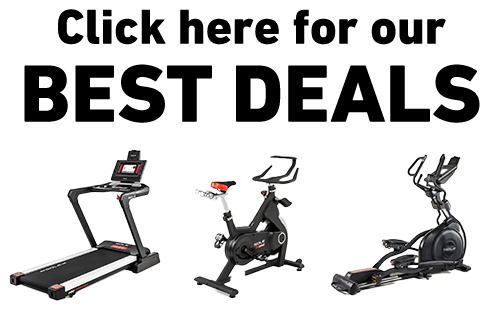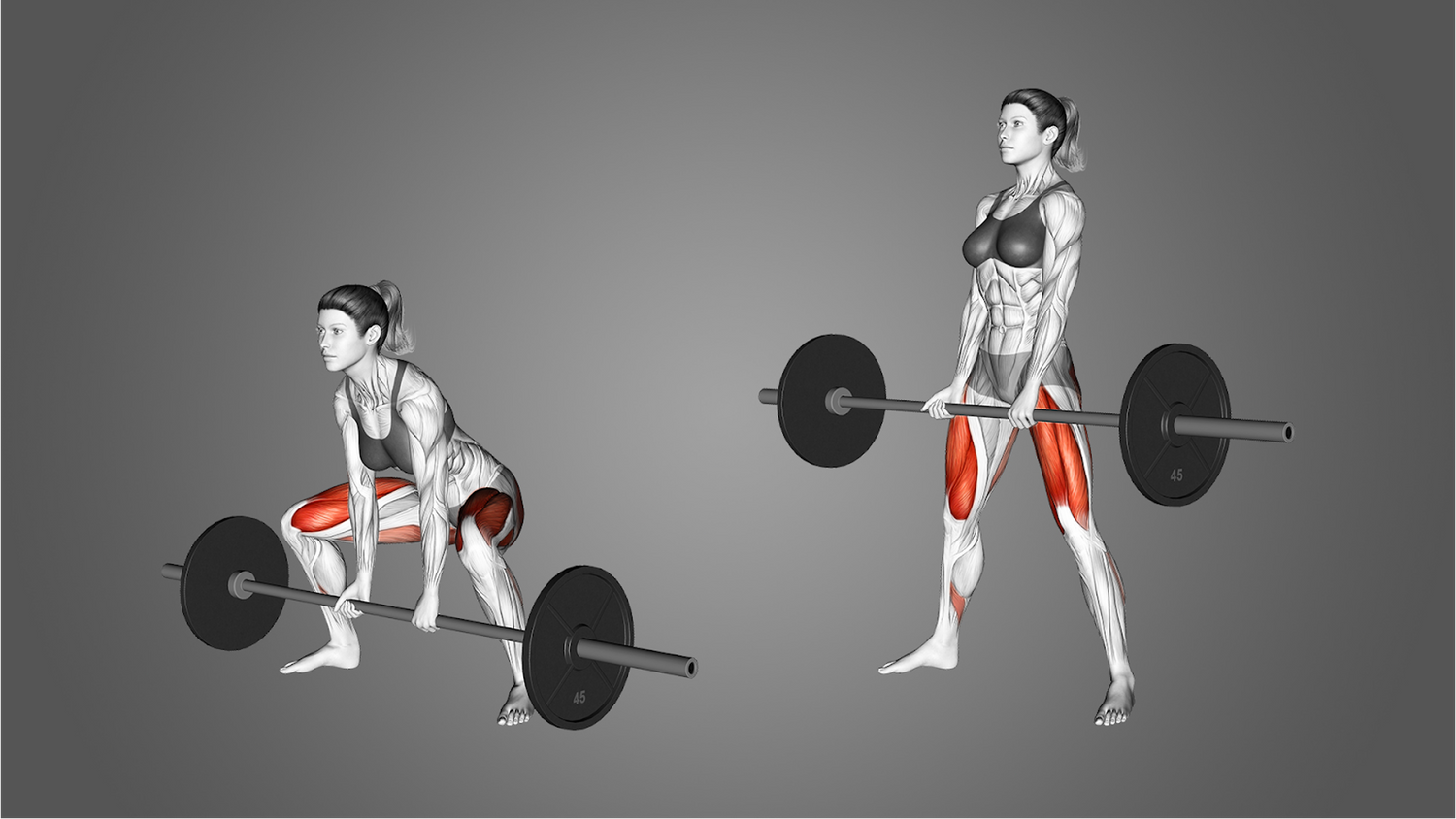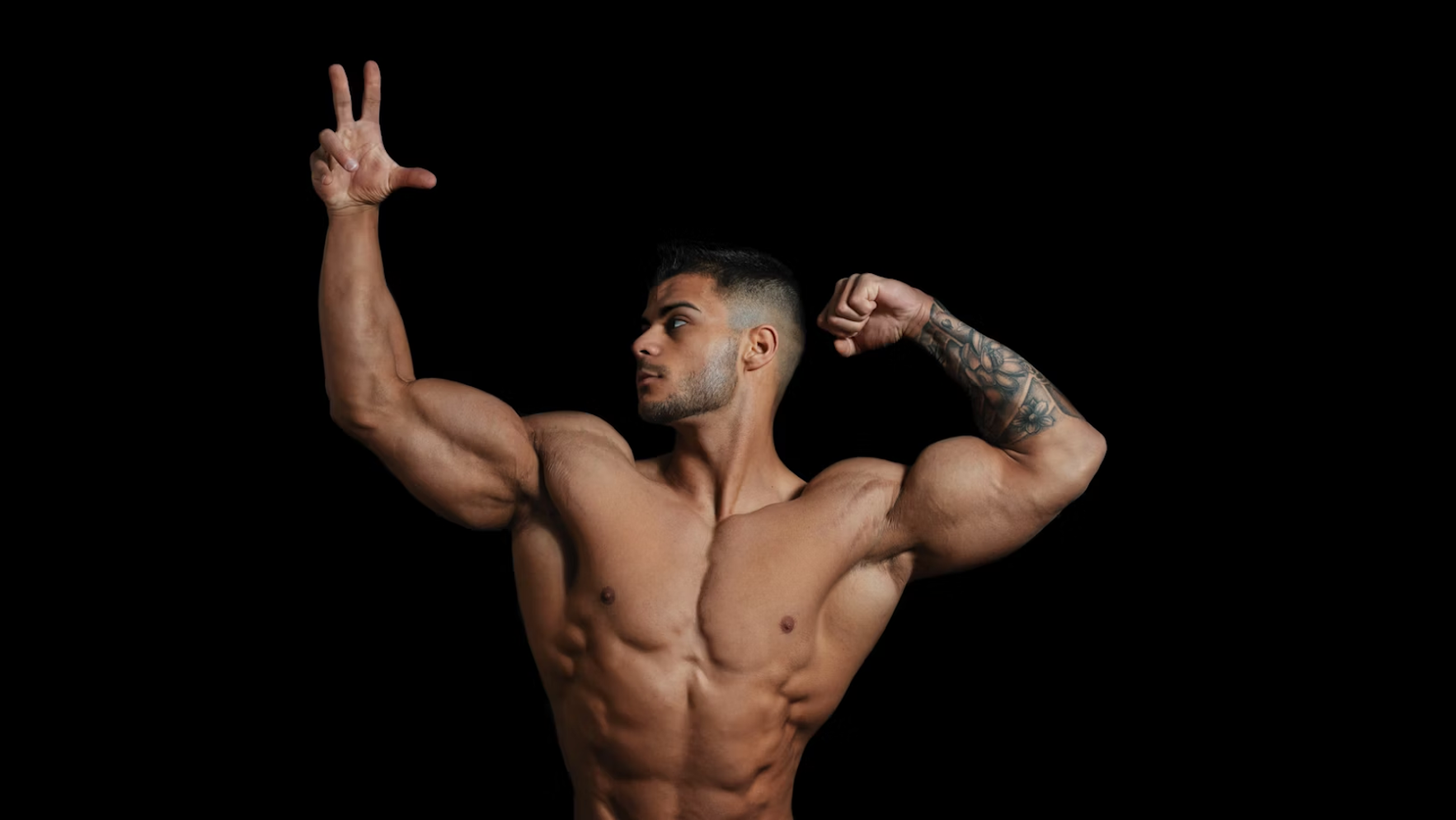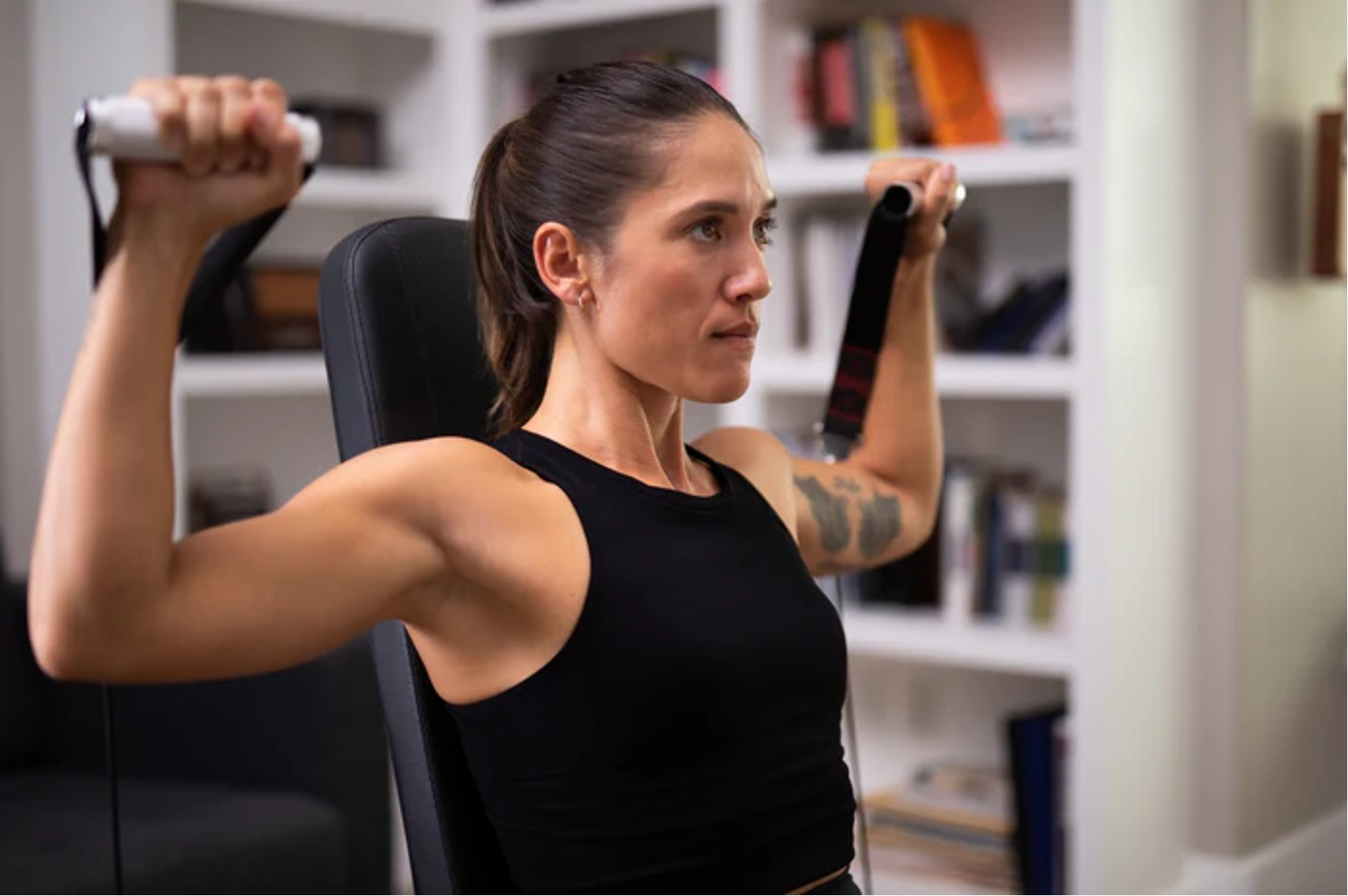Key Takeaways
- Sumo deadlifts allow you to lift 10–25% more than regular deadlifts due to a shorter range of motion.
- The sumo deadlift primarily targets the quads, glutes, and inner thighs, while the regular deadlift focuses on the hamstrings, glutes, and lower back.
- Regular deadlifts may place more stress on the spine, whereas sumo deadlifts can be easier on the lower back.
- Choose sumo deadlifts if you have longer legs or a shorter torso, and regular deadlifts if you want to enhance your overall posterior chain strength.
- SOLE strength equipment transforms deadlifting at home from a noisy, space-hogging nightmare into a smooth, strength ritual with tools designed to accommodate both exercises.
Sumo vs Regular Deadlift
Understanding Deadlift Variations
Deadlifts are the king of all lifts. They work multiple muscle groups and build incredible strength. But which style should you choose: sumo or regular?
In the sumo deadlift, your feet are positioned wide apart, and your hands grip the bar inside your knees. This stance reduces the range of motion and can allow you to lift heavier weights.
With regular deadlifts, your stance is narrower and your hands are outside your legs. You'll need to bend over more, which means your back and hamstrings are working overtime.
Comparative Overview
Let's take a look at a quick comparison of these two popular deadlift variations:
|
Aspect |
Sumo Deadlift |
Regular Deadlift |
|
Stance |
Wide |
Shoulder-width |
|
Range of Motion |
Shorter |
Longer |
|
Primary Muscles |
Quads, Glutes, Inner Thighs |
Hamstrings, Glutes, Lower Back |
|
Back Stress |
Less |
More |
|
Weight Capacity |
Higher |
Moderate |
|
At SOLE, we're proud to offer top-quality exercise equipment designed for home and gym use. Our machines are built to meet the highest standards of durability and performance, making them ideal for fitness enthusiasts at any level. SOLE Products
|
Sumo Deadlift Breakdown
Stance and Setup
In the sumo deadlift, you'll start by standing with your feet wider than shoulder-width apart. Turn your toes slightly outward, and keep your shins close to the bar. Your hands should grip the bar inside your knees.
Drop your hips, chest up, back flat. Take a big breath, brace your core, and pull that weight up by driving through your heels. This stance shortens the distance the bar needs to travel, and also allows you to keep your back more upright.
The sumo deadlift puts less stress on the knees than the regular deadlift.
Primary Muscle Groups
The sumo deadlift primarily targets the quads, glutes, and inner thighs. Because of the wide stance, your quads do more work, and your glutes are highly engaged throughout the lift. This can be very beneficial for athletes who want to improve their squat performance.
Apart from that, the sumo deadlift also involves the hamstrings and lower back, but to a lesser extent compared to the regular deadlift. This makes it a great option if you're trying to minimize stress on your lower back.
Targeted Benefits
- You can usually lift heavier weights.
- Less stress on your lower back.
- Great for people with longer legs or shorter torsos.
- Helps improve hip mobility.
- It can be easier to learn for some people.
Regular Deadlift Breakdown
Stance and Setup
For the regular deadlift, you'll start with your feet about shoulder-width apart. Your hands will grip the bar just outside your knees. This setup allows for a longer range of motion and more significant activation of the posterior chain.
The regular deadlift requires more bending at the hips and knees, which can place more stress on the spine. However, it also means that your entire body gets a serious workout, from your traps to your calves.
Primary Muscle Groups
When you perform a regular deadlift, you primarily engage the muscles of the posterior chain. This includes the hamstrings, glutes, and lower back. These muscles work together to help lift the weight from the ground, making the regular deadlift an excellent exercise for building overall strength and power.
Targeted Benefits
- They build a thick, strong back like nothing else.
- Great for overall strength that transfers to real life.
- More hamstring development.
- Often considered more "functional" (mimics real-world lifting).
- Required in powerlifting competitions.
Muscle Engagement Comparison
Posterior Chain Activation
The regular deadlift is the undisputed champion for posterior chain development. That bent-over position means your hamstrings, glutes, and entire back have to work harder throughout the lift. This is great if you want that thick, dense look from behind.
The sumo deadlift still works these muscles, but not as intensely. Your more upright torso position shifts some of the work to your quads, giving your back a bit of a break.
Core and Stabilizers
Both deadlift variations will give your core a serious workout. Your abs, obliques, and all those deep stabilizer muscles have to work overtime to keep your spine protected during heavy lifts.
The difference? Regular deadlifts challenge your core's ability to resist flexion (bending forward), while sumo tests your core's ability to maintain stability with a wider stance.
Both sumo and regular deadlift styles will make you strong, but they hit your muscles in different ways. (Image courtesy of Muscle & Strength)
Joint and Spine Stress
Regular deadlifts put more stress on your lower back due to the more bent-over position. This isn't necessarily bad (it can strengthen your back over time), but it's something to consider if you have existing back problems.
Sumo deadlifts allow for a more upright torso, which means less stress on the spine. For people with back issues or those who just find regular deadlifts uncomfortable, sumo can be a game-changer.
Difficulty Levels and Suitable Options
Comparison of Both Exercises
|
Difficulty Level |
Sumo Deadlift |
Regular Deadlift |
|
Beginner-Friendly |
Yes |
Moderate |
|
Back Stress |
Lower |
Higher |
|
Weight Capacity |
Higher |
Moderate |
For experienced lifters, incorporating both variations can provide a well-rounded strength training program. Alternating between sumo and regular deadlifts can help prevent plateaus and keep your workouts challenging and engaging.
Range of Motion Consideration
The regular deadlift wins for range of motion, which means your muscles work through a longer distance. This can translate to more muscle growth over time since you're challenging the muscles through a fuller range.
Sumo's shorter range is why you can usually lift more weight, but don't mistake that for it being "easier." You're still moving heavy weight, just in a mechanically different way.
Strength and Skill Requirements
Both lifts demand strength and proper technique, but in different areas:
Regular deadlifts require:
- Strong back muscles
- Powerful hamstrings
- Good hinging mechanics at the hips
Sumo deadlifts require:
- Strong quads
- Flexible hips
- Good ability to drive through the legs
Who Should Choose What?
Body Type Considerations
Got long legs and a short torso? Sumo might feel more natural for you.
Short legs and a longer torso? Regular deadlifts might be your jam.
The best way to know? Try both and see which one feels stronger and more comfortable.
Goal-Based Decisions
Choose sumo if:
- You want to compete in powerlifting and can lift more weight sumo-style.
- You have back issues that make regular deadlifts uncomfortable.
- You want to focus more on quad and inner thigh development.
- Your hip mobility is good, but your hamstring flexibility is limited.
Choose regular if:
- You want maximum posterior chain development.
- Your goals include building a thicker, stronger back.
- You compete in sports that benefit from hamstring power.
- You want to carry over strength to real-world lifting scenarios.
Turn Your Home Into a Deadlift Paradise with SOLE
Ever tried to deadlift with a cheap, wobbly bar that feels like it might snap in half? That's not happening with SOLE's gear. The SW111 Olympic Barbell feels like it was crafted specifically for pulling heavy—balanced weight distribution, just the right amount of flex, and knurling that grips without turning your hands into hamburger meat.
SOLE strength equipment allows you to get gym results at home with less equipment, without breaking the bank.
What about your deadlift stance? Regardless of which type, your stance needs room to breathe. That's why home deadlifters love SOLE's compact equipment setup. The SW180 Adjustable Dumbbells give beginners the perfect pathway to proper form—Romanian deadlifts with dumbbells build that hip hinge pattern before you graduate to the barbell.
The SRVO's silent resistance system lets you train deadlifts at midnight without sounding like you're dropping bowling balls. Progressive overload without the earthquake effects, so your neighbors might not even know you're building a back that could crack walnuts.
Look, deadlifts are technical. One wonky hip position and suddenly your lower back is sending hate mail. The SOLE+ App walks you through stance width, toe angle, and hip position for both styles. It's like having a powerlifting coach living on your phone.
Check out SOLE's line of strength equipment and transform your home into deadlift heaven today!
Frequently Asked Questions (FAQs)
Should beginners start with sumo or regular deadlifts?
Many beginners find sumo easier to learn because it's more upright and places less stress on the back. Others find the regular deadlift more intuitive because it resembles picking something up in everyday life.
The best approach? Learn both with light weights, then specialize in whichever feels stronger and more comfortable for your body type.
Which deadlift is better for building strength?
Both build impressive strength, just with different emphasis. Regular deadlifts might have a slight edge for overall development since they work the posterior chain more completely and have a longer range of motion.
That said, if you can lift significantly more weight with sumo, you might get better strength adaptations simply from moving heavier loads. The strongest approach is to train both styles at different points in your program.
Are sumo deadlifts safer for the lower back?
Sumo deadlifts can be easier on the lower back due to the more upright torso position and reduced range of motion. This makes them a suitable option for individuals with lower back concerns. However, proper form and technique are essential for both variations to minimize the risk of injury.
Can deadlifts help with weight loss?
Absolutely! Deadlifts work a ton of muscle mass, which means they burn a lot of calories during and after your workout. They also build muscle, which increases your metabolism long-term.
That said, no exercise can outwork a bad diet. Combine deadlifts with good nutrition for the best results.
How do I know which deadlift style works best for my body type?
Your body's built uniquely, and SOLE strength equipment is built with that in mind. Longer legs? The SOLE barbell's balanced construction makes sumo deadlifts feel natural, letting you sit back comfortably without the bar drifting forward. Got a longer torso? The Olympic barbell's knurling placement provides perfect hand positioning for regular pulls without wrist strain.







Leave a comment
This site is protected by hCaptcha and the hCaptcha Privacy Policy and Terms of Service apply.